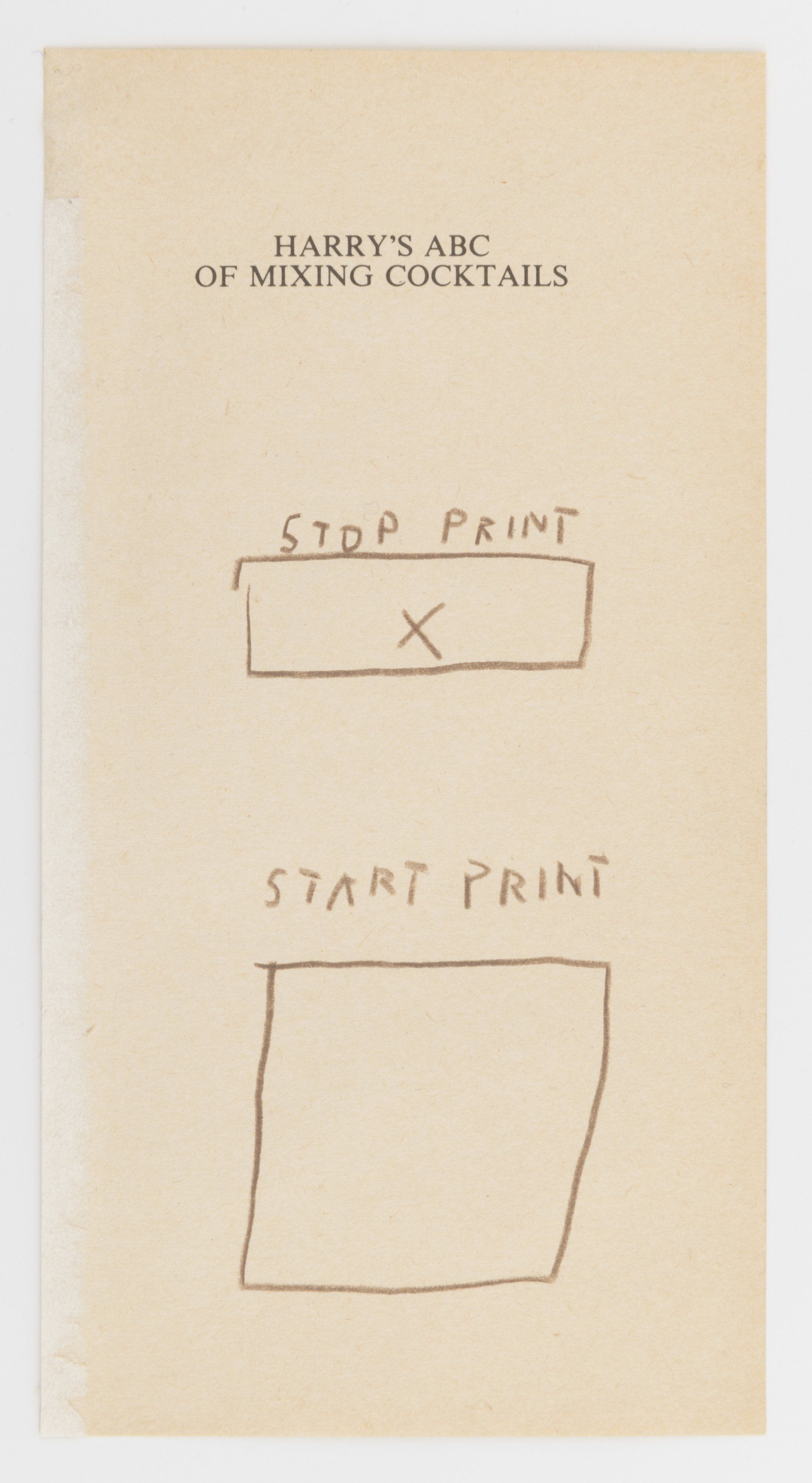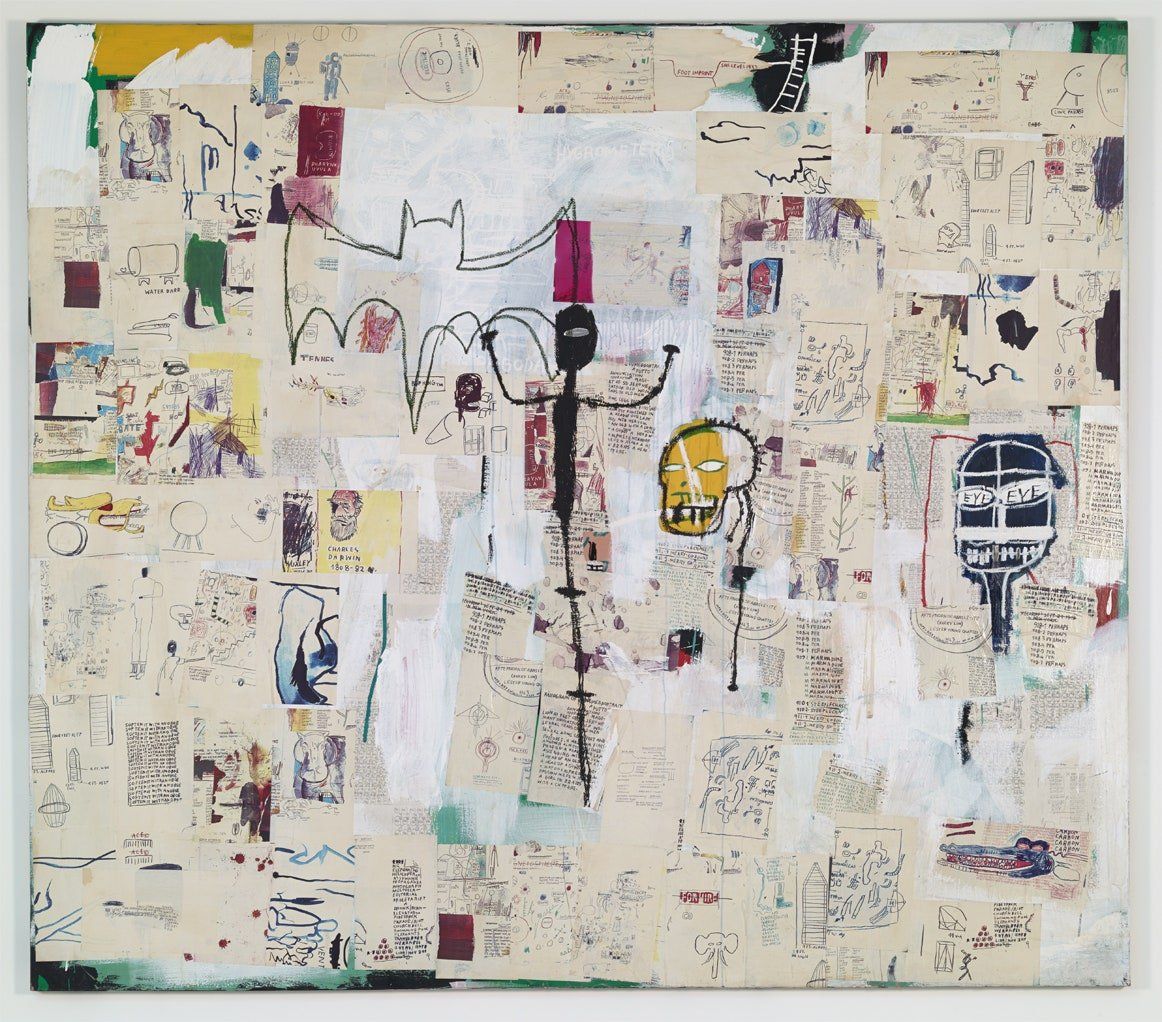“STOP PRINT X START PRINT”
With simple graphics and text – one rectangle, one square, one “X”, and the imperatives, “STOP PRINT” “START PRINT” – Basquiat’s drawing on the frontispiece of Harry’s ABC captures the action of one of his vital artistic tools, a machine of reproduction most frequently known as the Xerox photocopier.
Basquiat used the replicative ability of the Xerox machine to duplicate his drawings and texts in order to collage and remix them, creating a new, layered visual language with multifarious meanings. As noted in recent monographs of the artist’s work, including Dieter Buchhart’s Words Are All We Have: Paintings by Jean-Michel Basquiat (Hatje Cantz, 2016) and Jean-Michel Basquiat: Xerox (Hatje Cantz, 2019), “The intricate web of content ...presages the copy-paste sampling characteristic of the subsequent Internet and post-Internet generations, positioning Basquiat as a pioneer of the pre-digital age.”
As a fan and participant in the complex culture of Hip-Hop, with its use of sampling, lyrical complexity and sound mixing, as well as his familiarity with the work of poet William S. Burroughs, the tri-lingual Basquiat was highly attuned to words, their nuances, and how symbols from various cultures and subcultures could combine to create an entirely new form of visual hybrid.
Additionally, “STOP PRINT X START PRINT " is a salient example of text related to the artist’s interest in the instruments of technology, including sound recording and film equipment, for which one finds many instances in his paintings, including “MICROPHONE,” “DIODE,” “ADAPTER (AC),” “FEED:EJECT,” “BOX CAMERA,” and “VITAPHONE”.
In an essay by art historian Robert Farris Thompson in Franklin Sirmans’ publication, Basquiat and the Bayou for his exhibition of the same title held at the Ogden Museum of Southern Art, New Orleans in 2014-15, Thompson specifically cites the painting formerly in his own collection, Untitled (Zydeco in the Context of the Media), 1985, a gift to him from Basquiat, and the important triptych, Zydeco, 1984, as works with texts related to technology. As seen in another work in Harry’s ABC, page 95 (“HONER/H”), Basquiat’s depictions of and references to musical instruments played by Black artists, be it the accordion, the trumpet, or the saxophone, were often accompanied by the tools of sound and image capture which simultaneously made profit from that same music possible.
Janis Gardner Cecil


